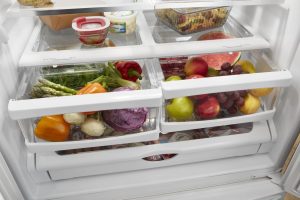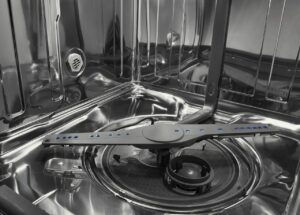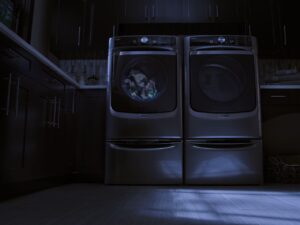How Does a Refrigerator Humidity Drawer Work?

Unfortunately, the price of our fresh produce has risen over the last few years, and this makes the effective preservation of our food a priority. After all, no-one wants to spend good money on food and then throw it away because it goes bad. The best way to protect your produce in a refrigerator is to use a humidity drawer. In this article, we will explain what a humidity drawer is and how it works so that you can make an informed purchasing decision.
What is a Humidity Drawer?
This is a compartment inside your refrigerator that will regulate the humidity levels to keep the produce fresher. Different types of produce require differing levels of humidity to keep them at optimum freshness for longer periods of time. A humidity drawer is sometimes known as a crisper drawer, and it can significantly extend the lifespan of produce. This will negate the need to buy produce more often, and it will save you money by reducing waste.
How Does a Humidity Drawer Work?
A humidity drawer has a sliding mechanism that can be adjusted to alter the level of humidity inside. This is useful because different types of produce react to humidity in differing ways making it hard to store certain types of produce together. For this reason, many people now have multiple humidity drawers dedicated to different types of produce that can be stored together safely. There are two main types of humidity drawer settings available; they are high and low humidity drawers.
Low Humidity
This drawer setting is ideal for produce that is not sensitive to losing moisture and that emit a certain level of ethylene gas. When you need this setting, open up the window, and the moisture and any ethylene gas in the drawer can easily escape. A low humidity drawer setting is ideal for produce, such as avocados, apples, figs, cantaloupes, honeydew melons, papayas, mangoes, apples, plantains, pears and any stone fruit (plums, peaches, nectarines, and apricots). There are some fruits that do better outside of the refrigerator, such as apples, pineapple, pomegranates, banana, plantains, papayas, mangos, and stone fruit. As an example: an apple can easily last outside the refrigerator if it’s consumed within a week.
High Humidity
This is a drawer setting for any stored produce that needs more moisture and is sensitive to losing ethylene gas. Closing the window will lock in all the moisture, and this will help your produce to stay fresh and crisp for much longer. This is an ideal setting to store produce such as broccoli, carrots, cauliflower, eggplant, cucumbers, herbs, green beans, leafy greens, peppers, strawberries, peas, okra, watermelon, summer squash, and brussels sprouts.
Produce Storage Tips
Many fruits give off ethylene gas, which acts as a ripening agent, but it can spoil certain types of vegetables if they are stored in the same humidity drawer. Dividing up your produce according to the produce types listed above will help your items to last longer. It makes good sense to have at least one dedicated low and high humidity drawer to keep produce separate for efficient storage.
Citrus fruits are a separate case, and they need to be handled in a different way. These types of fruit prefer extremely low levels of humidity, and they don’t store well even in a low humidity drawer. The best way to store citrus fruit is in your refrigerator but not in a crisper drawer.
Tracking the contents of your refrigerator makes goods sense, and it will help you to avoid food waste. A modern smart refrigerator can help you to track expiration dates, provide a digital display of the contents, and help you to create a shopping list. This can then be sent to an app on your phone, and you can refer to it at the store.
If you are thinking of upgrading to a smart refrigerator, discover your options with our online refrigerator collection, or for further help and guidance, speak to a home appliance expert.
- Choosing Between a Plastic and a Stainless Steel Dishwasher Tub
- Steam Dryers: Efficient, Gentle, and Wrinkle-Free Laundry Solution
- Benefits of a Smart Washing Machine
- Beverage Stations: Elevating Your Kitchen with the Latest Trend
- New Ways to Design Your Kitchen in 2024
- Should You Choose a Column Refrigerator?
- The Benefits of an Outdoor Pizza Oven
- Should You Choose a Freestanding or Slide-In Range?
- Understanding Microwave Wattage
- Standard or Pro Ranges: Which One is Best for Your Home?






